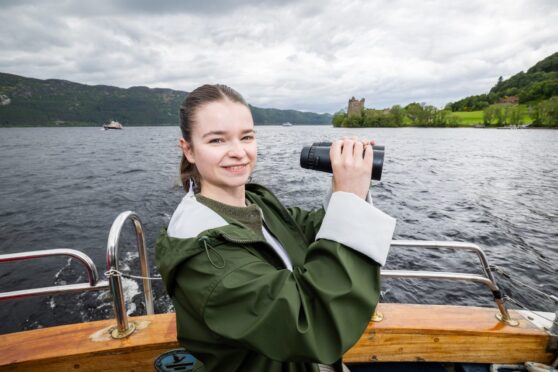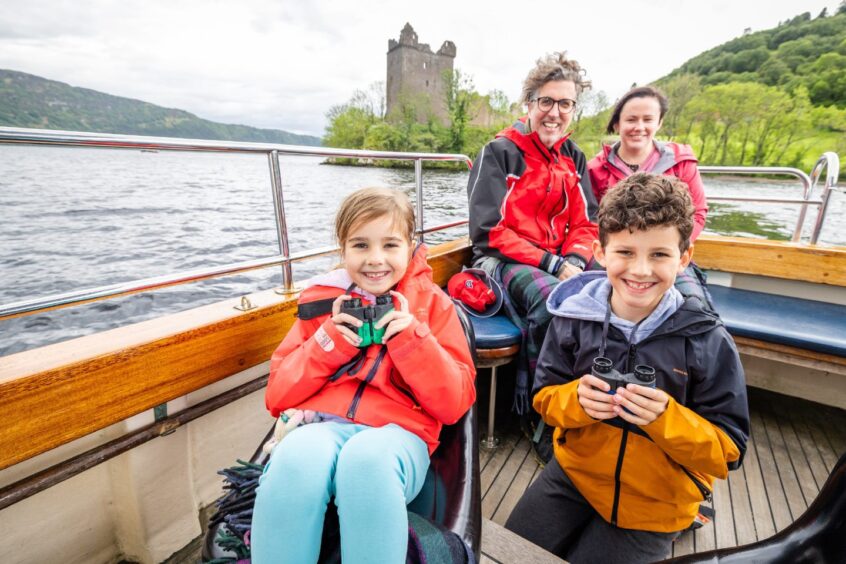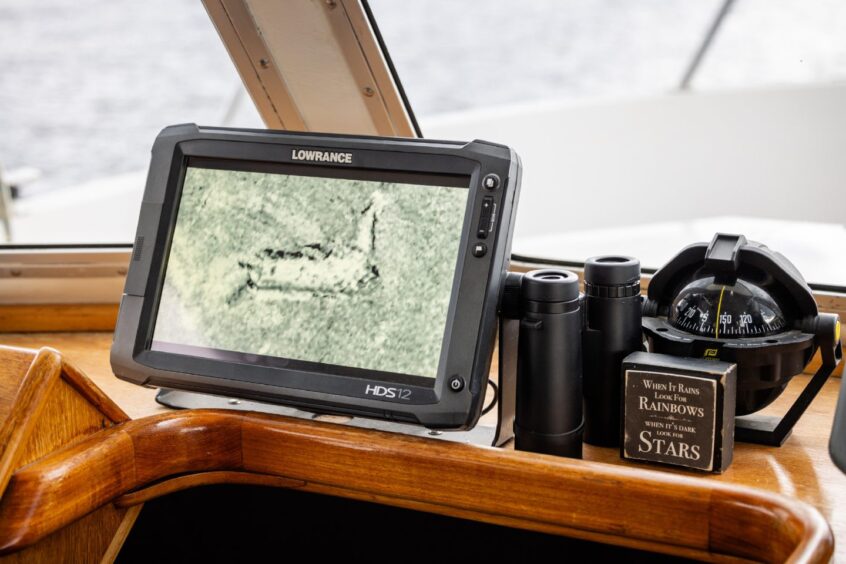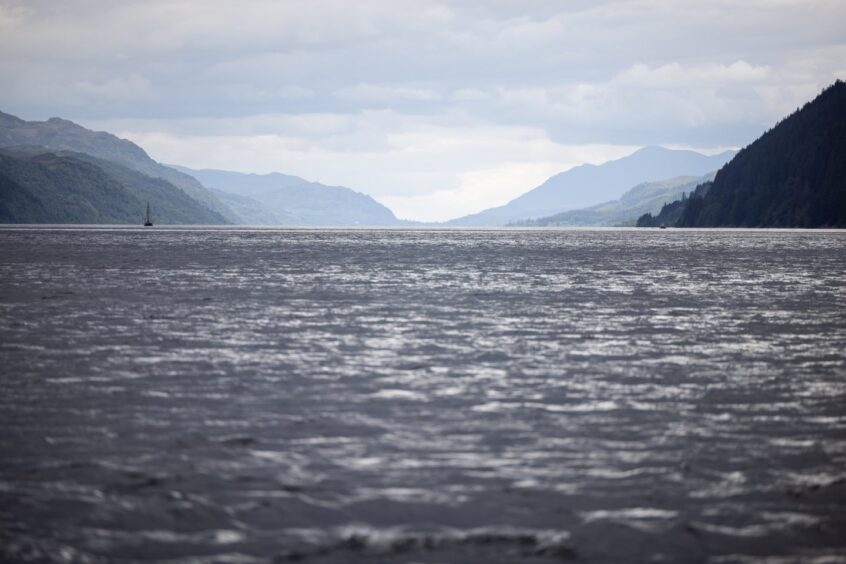
I know fine well there is no such thing as the Loch Ness Monster. And yet, every time I declare it, there is a little niggle in me that says “but what if…”
So there I was, binoculars glued to my eye sockets, scanning the water. I have lived in Inverness for a good few years now and would be lying if I said I didn’t have a quick check every time I drive alongside the loch or wander along Dores beach.
But this wasn’t a simple drive-by or beach trip, oh no. I was part of one of the biggest searches there has ever been; The Quest – 2.0 to be precise.
The Quest for Nessie
Ninety years ago, Sir Edward Mountain formed a team of 20 “Watchers of the Monster” for the first organised surface scan of the loch.
Since then there have been over 1,156 sightings of the beast on the Official Loch Ness Monster Sightings Register.
Last year, the newly renovated Loch Ness Centre in Drumnadrochit held its first Quest, conducting a land search with hundreds of people spread along all 23 miles of the loch both in person and online via cameras, watching for any sign of the ever-elusive Nessie.
Hundreds joined the search again this weekend from Thursday to today.
I was onboard Deepscan, a vessel named after the Operation Deepscan expedition famously carried out on the loch in 1987. With me was another journalist, two cameramen, four American women and the four-strong Cook family from Essex, which included eight and six-year-old Arthur and Beatrice. At the helm of the boat was Alistair Matheson, skipper for the Loch Ness Project.
“The Project has been working in and around Loch Ness for more than 40 years now,” said Alistair.
“We’ve worked out here with lots of different people, from film companies and documentary makers to scientists and universities. For us, it’s all about understanding Loch Ness. How does this body of water work? That’s our passion.”
Alistair takes people out on the loch six times a day most days of the week.
As we pulled away from the dock, he showed us the echo sounder, far right, in the cabin that uses sonar to map out the depth of the loch, which goes down 227 metres at its deepest. He explained that, if a red dot the size of his thumb appeared on the screen, we would know Nessie had swum beneath us.
Out on the loch
The sky was grey but the visibility was good and, luckily, the water calm. Not quite enticing enough for a swim though, after Alistair told us the average water temperature was about 6C.
Arthur and Beatrice used the binoculars that hung around their necks to keep an eye out for the monster. I asked if they thought we might catch a glimpse and Arthur excitedly said “maybe”. We reckoned Nessie might have been in hiding for years just waiting for them to come up on their holidays.
Alistair said the Loch Ness Project did more than spot Nessie in 2016; they actually found her at the bottom of the loch – well, kind of.
“We were using this very clever sonar, torpedo-style equipment that you put into the water and it shoots off down into the loch to spend hours mapping out the bottom and take back incredible images,” he said.
“I can in fact confirm we did find the Loch Ness Monster. And it was big, 10 metres long. Mission accomplished, mystery solved.
“Well, I’m afraid not, because it turns out this particular monster was a giant model built and used as a film prop for The Private Life Of Sherlock Holmes, which had sunk in bad weather.”
The sediment and mud that lies at the bottom of the loch has been building since the end of the last ice age – 10,000 years ago. Samples taken from it have contained traces of radiation from Chernobyl and more from nuclear testing on the other side of the world in the Pacific in the 50s and 60s.
With Alistair’s expertise as a soundtrack, we all kept our eyes on the surface of the water. Was that a fin? A shadow below the surface? The best way to describe the shape of Loch Ness is, according to Alistair, like a bathtub. Because it runs along the middle of the Great Glen, hills rise up around it, then beneath the surface, steep sides go down to a flat bottom.
A fact locals – myself included – love to tell anyone who will listen is that Loch Ness contains more water than all the lakes in England and Wales put together. Despite this, the loch is often quiet, and Alistair said he has to navigate more monsters than boats.
I sat with Lori, Linda and the two Kellys who were over from Florida as we sailed by Urquhart Castle. The best friends live across the road from one another and Scotland is just the most recent of their travels.
They likened our fascination with Nessie to Bigfoot and agreed that, no matter how sceptical you want to appear, you will always keep an eye out.
We docked back with little to report from our own little part of The Quest. But even as we headed back to the Loch Ness Centre, I noticed all eyes on the water.
The hunt continues
On Saturday, Alan McKenna from Loch Ness Exploration took searches on the loch to a new level with the addition of his hydrophone – basically a super-sensitive microphone that goes underwater and can hear sounds from miles away. He let me hear a recording from the loch in January, during which you can hear a distinct “slap” disrupting the white noise of the depths.
“I had heard things in the night before, but never like that,” he said.
“We still don’t know what it was. It could have been a sudden rush of water, or underwater turbulence, but it could be something else, and that’s what keeps us going.”
Alan’s papa introduced him to Nessie when the pair read Tim Dinsdale’s The Story Of The Loch Ness Monster together. For him, The Quest is about more than finding evidence to prove or disprove the existence of Nessie.
He said: “People who came before me inspired me as a young boy, like Adrian Shine, founder of the Loch Ness Project, and I want to keep passing that torch. Sure, it’s about the Loch Ness Monster, but it’s about the environment as well. A lot of people just see a body of water, but the more you dive into it, and the history and geology of the loch, that gets me excited.
“Don’t get me wrong, I would love to hear Nessie and get proof of the Loch Ness Monster, but even just being out on the boat on the loch is mesmerising to me.
“Anyone who says they don’t check the loch when they pass it, they are talking nonsense. That ‘what if?’ is so important. Impossible is just a word.”

Enjoy the convenience of having The Sunday Post delivered as a digital ePaper straight to your smartphone, tablet or computer.
Subscribe for only £5.49 a month and enjoy all the benefits of the printed paper as a digital replica.
Subscribe © Paul Campbell
© Paul Campbell © Paul Campbell
© Paul Campbell © Paul Campbell
© Paul Campbell